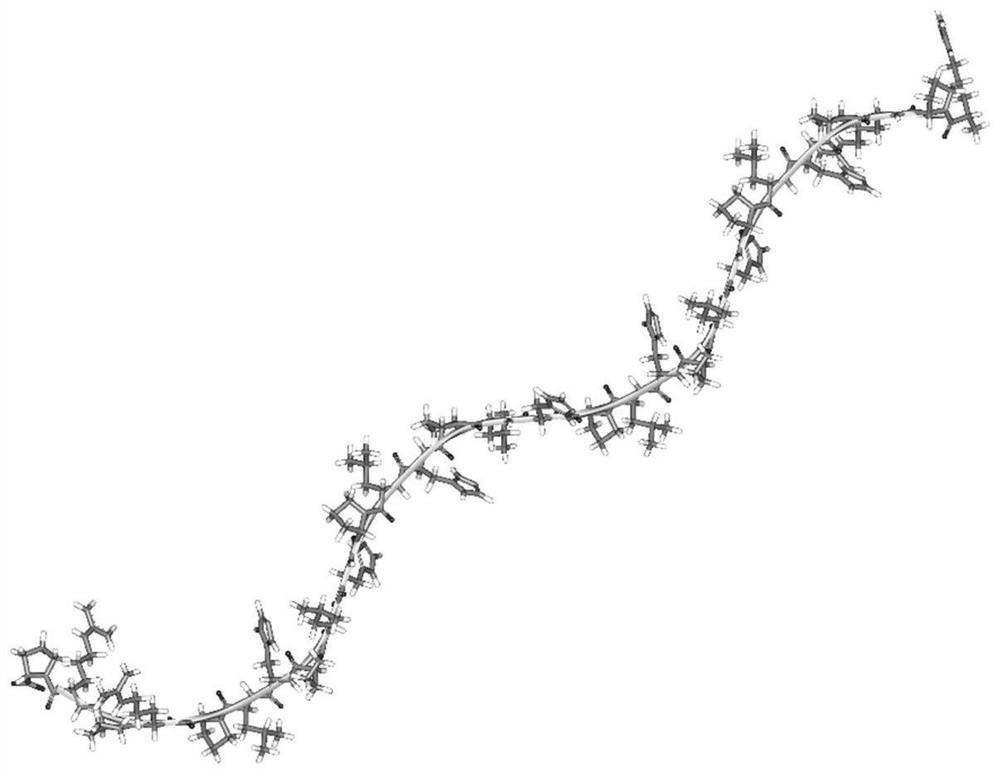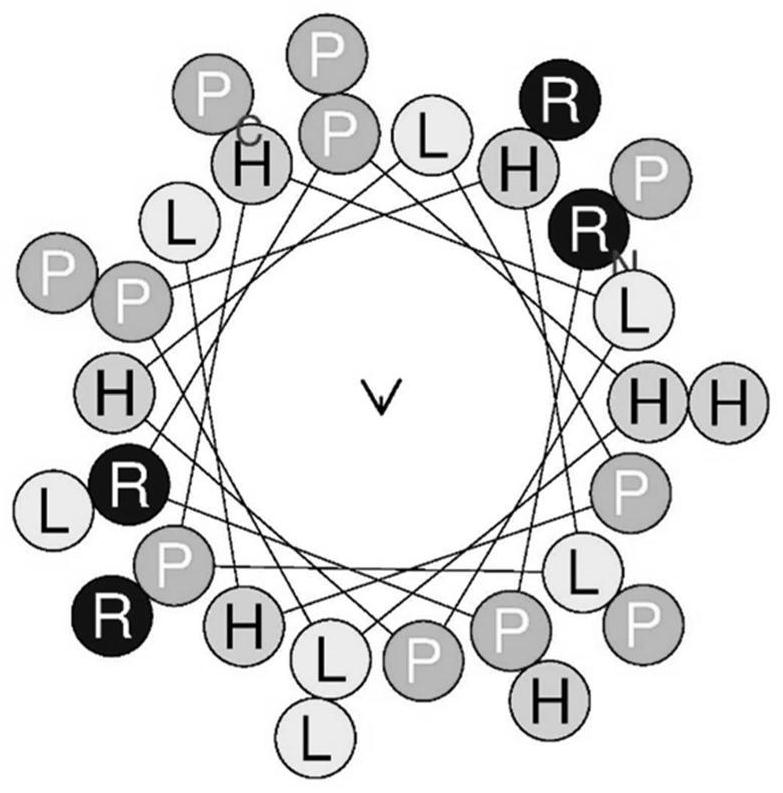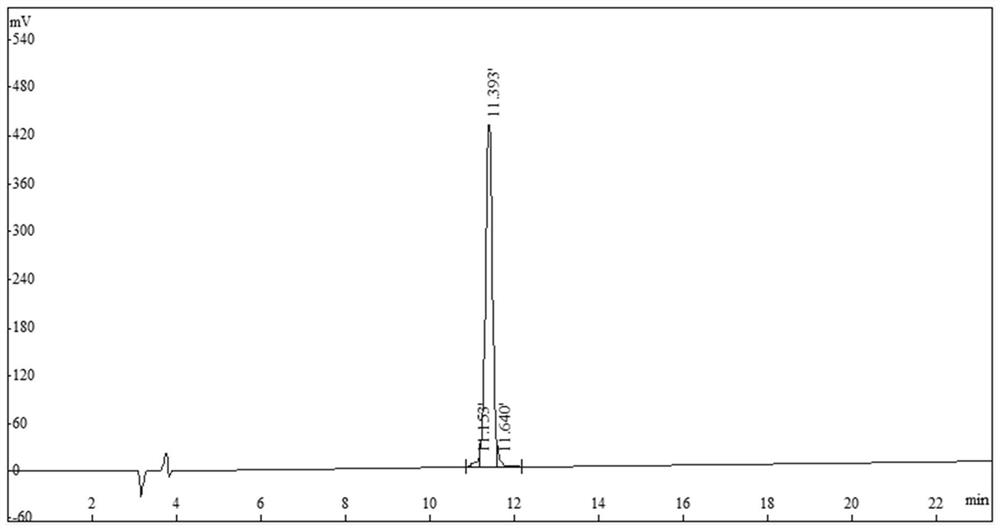A kind of high stability antibacterial peptide and its application
An antibacterial peptide and acid technology, applied in the fields of genetic engineering and biological preparations, can solve the problems of complex application environment, increase production cost, inactivation of antibacterial peptides, etc., and achieve the effects of low hemolytic activity, low cost and enhanced activity
- Summary
- Abstract
- Description
- Claims
- Application Information
AI Technical Summary
Problems solved by technology
Method used
Image
Examples
Embodiment 1
[0029] Embodiment 1 solid-phase chemical synthesis method synthesizes antimicrobial peptide of the present invention
[0030] In this embodiment, the antimicrobial peptide of the present invention (see SEQ ID NO.1) is synthesized by solid-phase chemical synthesis method, and the peptide structure schematic diagram is as follows figure 1 As shown, the schematic diagram of the spiral wheel is shown in figure 2 shown.
[0031] 1. The preparation of antimicrobial peptides is carried out one by one from the C-terminal to the N-terminal, and is completed by a peptide synthesizer. First, Fmoc-X (X is the first amino acid at the C-terminal of each antimicrobial peptide) is inserted into Wang resin, and then the Fmoc group is removed to obtain X-Wang resin; then Fmoc-Y-Trt-OH (9 -Fmoxy-trimethyl-Y, Y is the second amino acid at the C-terminus of each antimicrobial peptide); according to this procedure, it is synthesized from the C-terminus to the N-terminus until the synthesis is co...
Embodiment 2
[0035] The mensuration of the antibacterial activity of embodiment 2 peptide
[0036] The minimum inhibitory concentration of the peptide (RP29) prepared in Example 1 to bacteria was determined by the microdilution method. Add 0.2% fetal bovine serum albumin containing 0.01% acetic acid as a diluent into a 96-well plate, and sequentially prepare a series of gradient antimicrobial peptide solutions using the doubling dilution method, so that the volume of the solution in each well is 50 μL. Then add 50 μL of the bacteria solution to be tested (~10 5CFU / mL) in each well, the medium is MHB (pH=7.4 or 6.5). Positive controls (containing bacterial fluid but not antimicrobial peptides) and negative controls (neither bacterial fluid nor peptides) were set up. Incubate at a constant temperature of 37°C for 18 hours, then measure the light absorption value at 492nm with a microplate reader, and use the value greater than 0.1 as the judgment standard for the growth of the strain to de...
Embodiment 3
[0043] The mensuration of the hemolytic activity of embodiment 3 peptide
[0044] Take 1 mL of fresh porcine red blood cells and dilute them 10 times with PBS for later use. PBS was used as a diluent to add to a 96-well plate, and a series of gradient antimicrobial peptide (peptide RP29 prepared in Example 1) solutions were sequentially prepared using the doubling dilution method, so that the volume of the solution in each well was 50 μL. Add 50 μL of erythrocyte suspension to the wells containing the peptide, the erythrocyte suspension treated with 0.1% Triton was used as a positive control, and the untreated erythrocyte suspension was used as a negative control. The 96-well plate was then incubated in a 37°C incubator for 1 h. Centrifuge at 1000g for 5 minutes, draw 50 μL of supernatant from each well of the 96-well plate, transfer it to a new 96-well plate, and then use a microplate reader to measure the light absorbance at 570 nm. The test set two parallel ,repeat three ...
PUM
 Login to View More
Login to View More Abstract
Description
Claims
Application Information
 Login to View More
Login to View More - R&D
- Intellectual Property
- Life Sciences
- Materials
- Tech Scout
- Unparalleled Data Quality
- Higher Quality Content
- 60% Fewer Hallucinations
Browse by: Latest US Patents, China's latest patents, Technical Efficacy Thesaurus, Application Domain, Technology Topic, Popular Technical Reports.
© 2025 PatSnap. All rights reserved.Legal|Privacy policy|Modern Slavery Act Transparency Statement|Sitemap|About US| Contact US: help@patsnap.com



